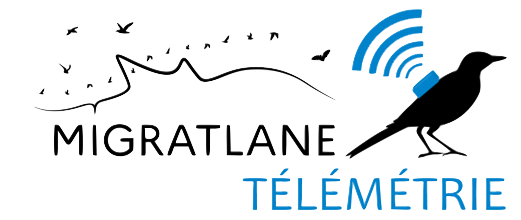Gallery
Gallery
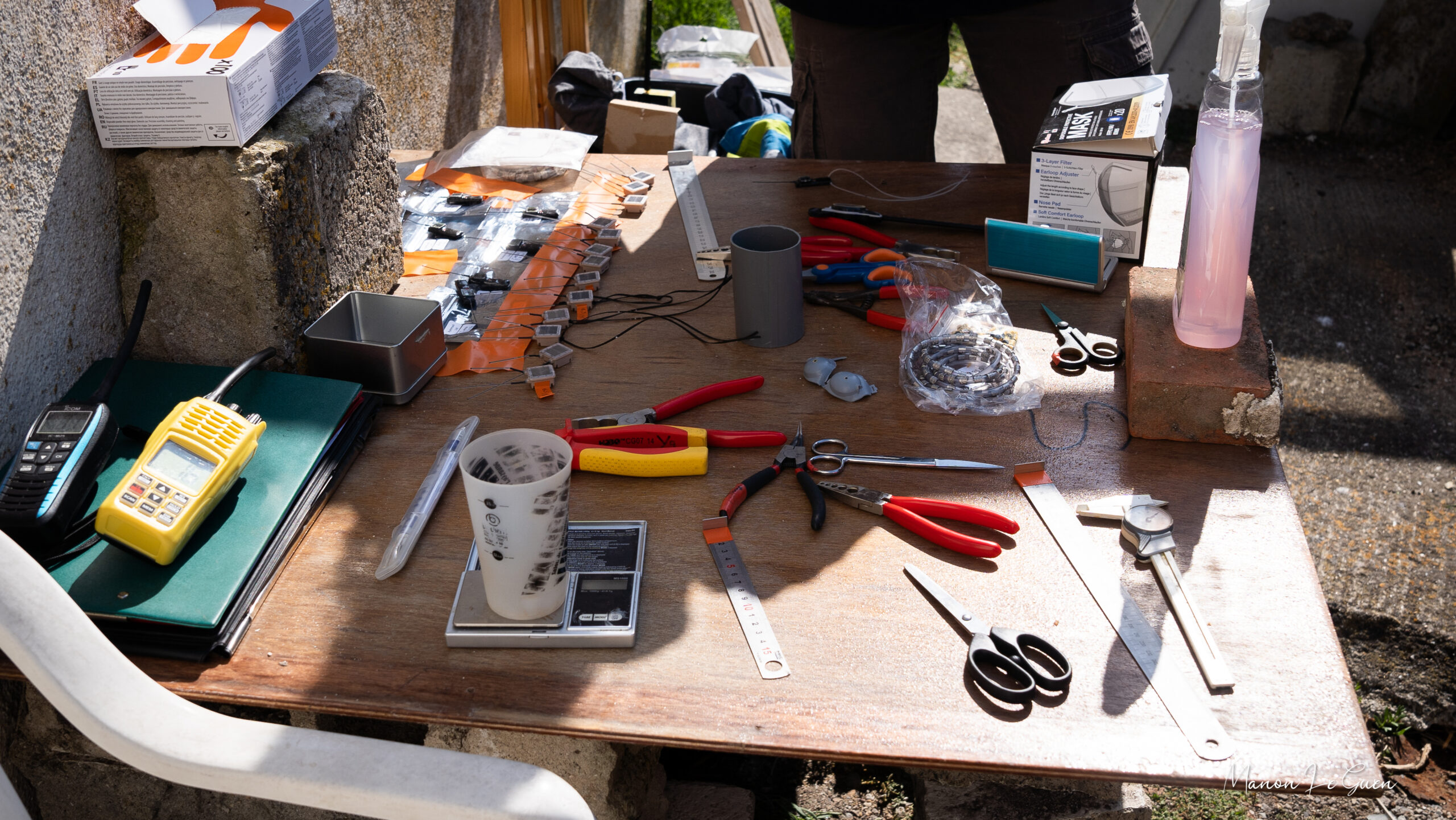
The banding table
Before the birds are captured, everything must be ready and meticulously laid out for banding, measuring and GPS fitting. Once the birds have been captured and brought to the banding table, they are handled for a minimum of time before being released. It is also important to provide cleaning and disinfecting supplies for all equipment, as well as for the hands of banders and assistants.
Photo : Manon Le Guen
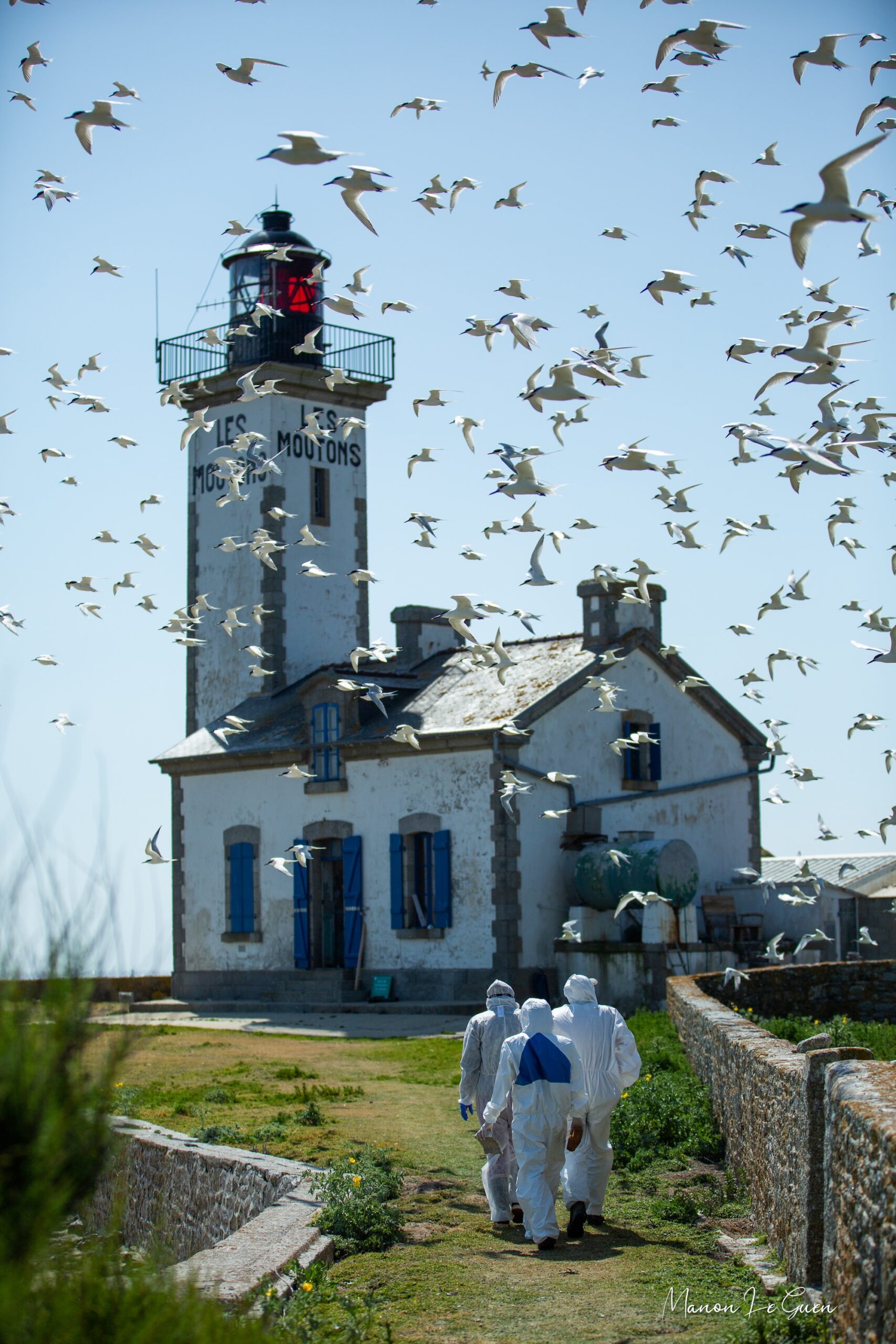
Biosecurity at the heart of our concerns
The summer of 2023 saw a wave of highly pathogenic avian influenza (HPAI) epizootics, which particularly affected certain seabirds such as terns and larids. The study of terns on Ile aux Moutons, in the Saint Nicolas des Glénan National Nature Reserve, with a view to fitting them with GPS, was carried out in compliance with drastic sanitary instructions to protect both the birds and the scientists. Protective clothing, systematic disinfection of boots and banding and capture equipment. This mission was carried out with the assistance of a team from Bretagne Vivante, manager of the reserve.
Photo : Manon Le Guen
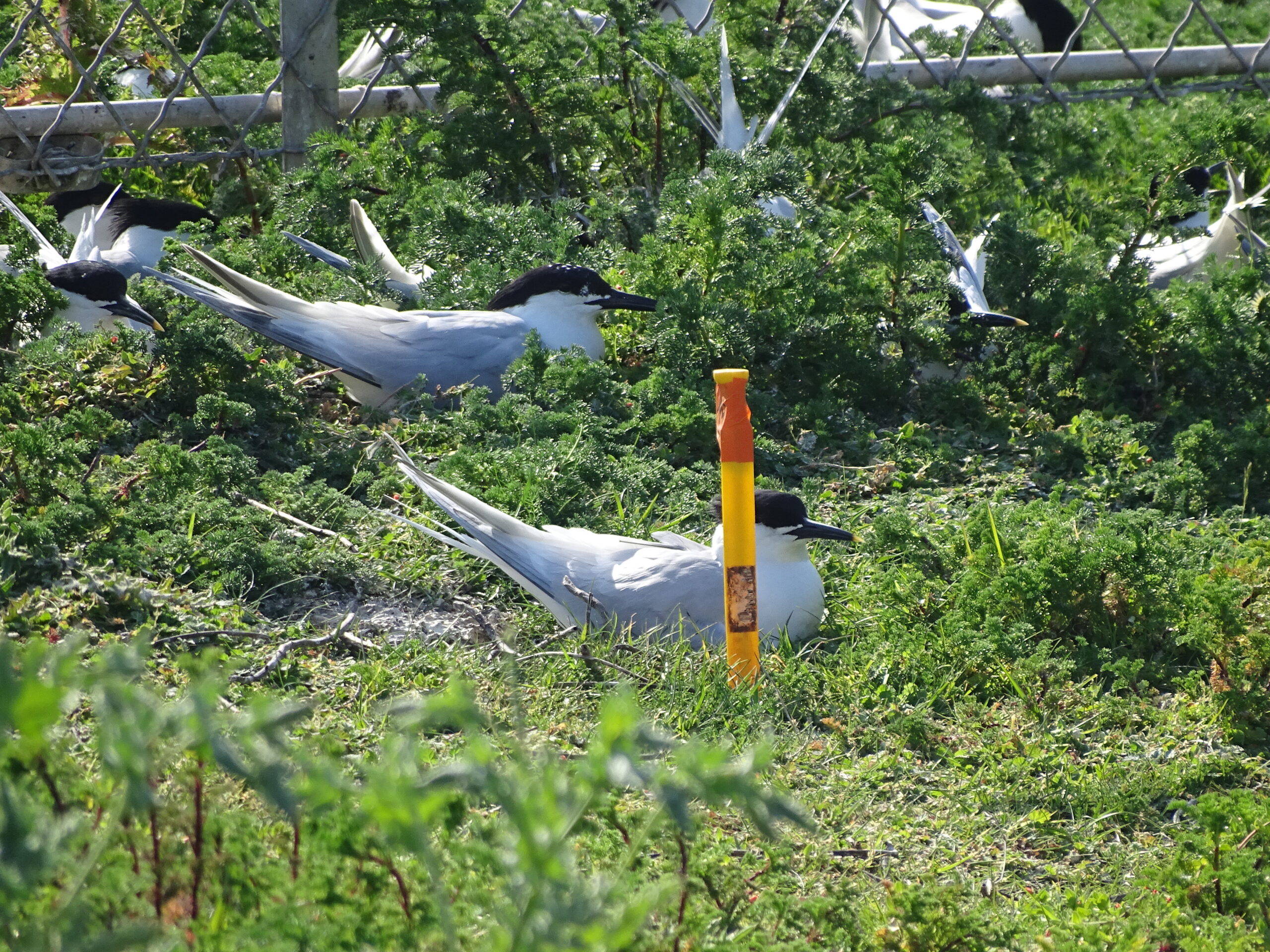
Equipment for breeding sandwich terns
This sandwich tern has returned to its nest to incubate its eggs, in the RNN of Saint Nicolas des Glénan, after being fitted with a 5.5g GPS which will enable its comings and goings at sea to be tracked virtually live.
Photo : Bernard Cadiou
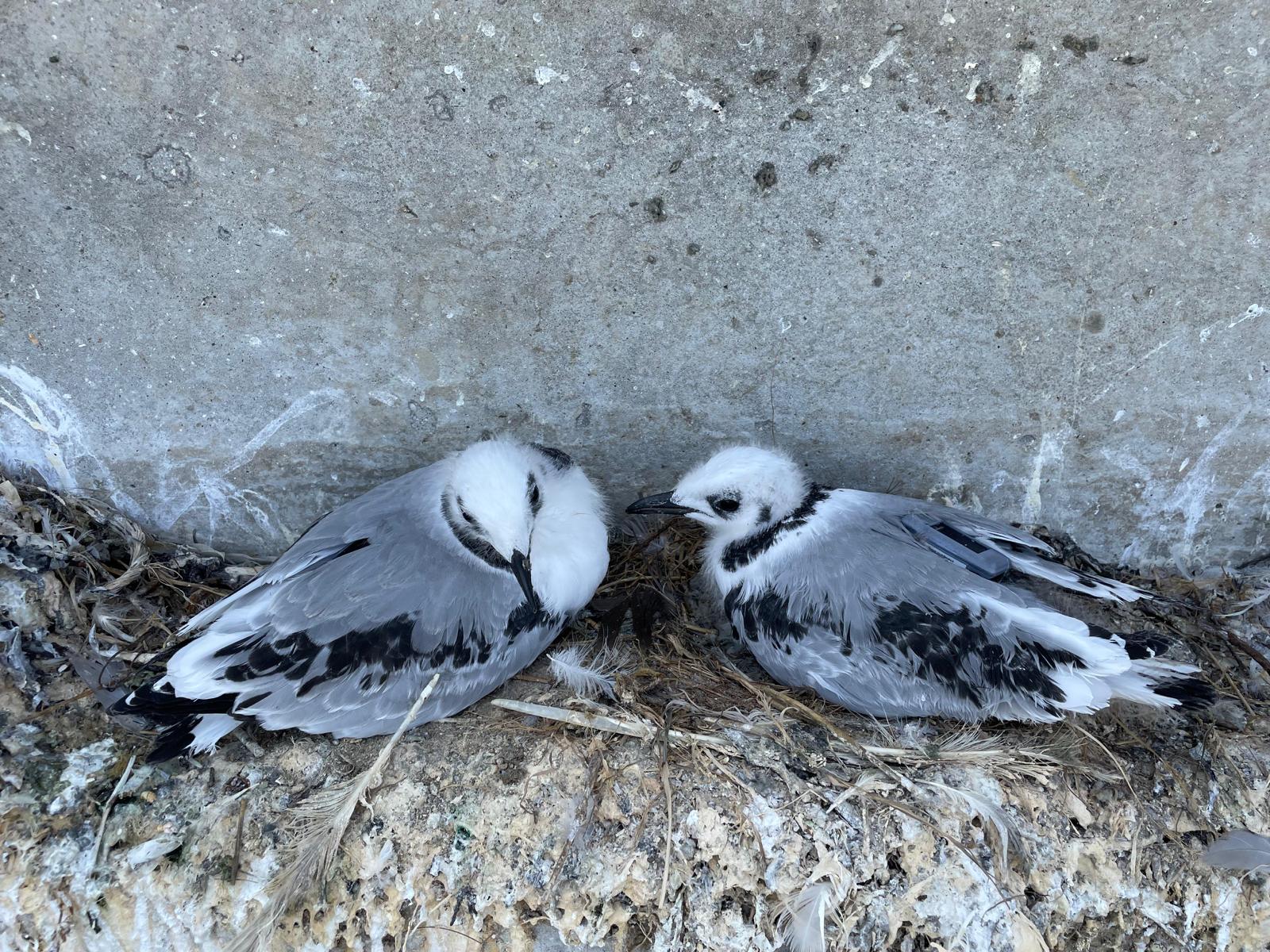
Equipped for flight
A young black-legged kittiwake has been returned to its nest with its sibling. A few weeks later, this youngster will take flight and visit the UK before heading further north to the Faroe Islands. As far as we know, these data on the dispersal of young black-legged kittiwakes are unprecedented in Europe.
Photo : Frédéric Jiguet
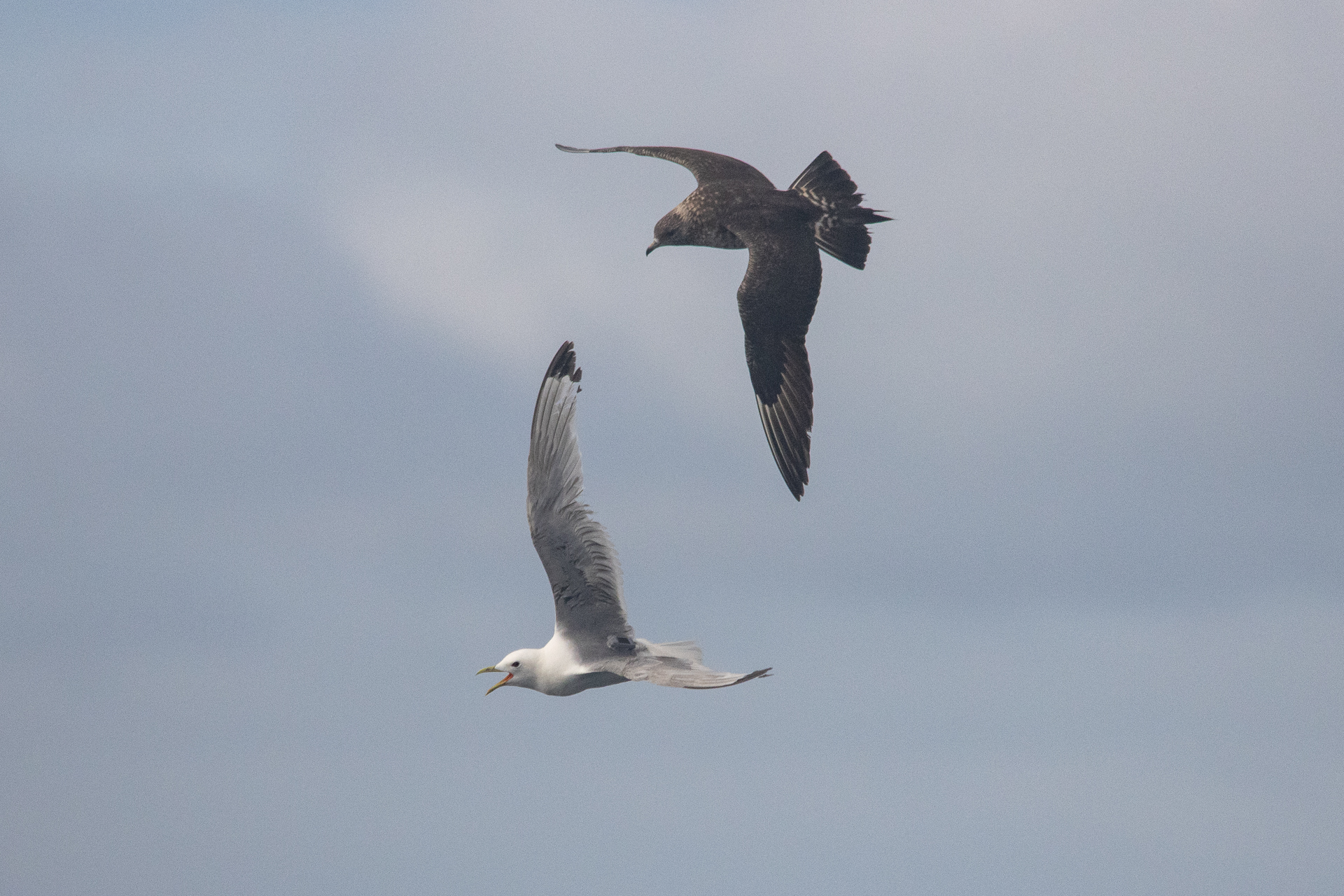
Two Migratlane species meet
A parasitic jaeger was caught harassing a GPS-equipped adult black-legged kittiwake in July as part of the Migratlane program. Parasitic jaegers, which regularly feed in winter by stealing food from other seabirds, are also a species we’re going to equip with GPS in Scandinavia to discover their migratory and wintering routes to our coasts.
Photo : Pierre Rigalleau
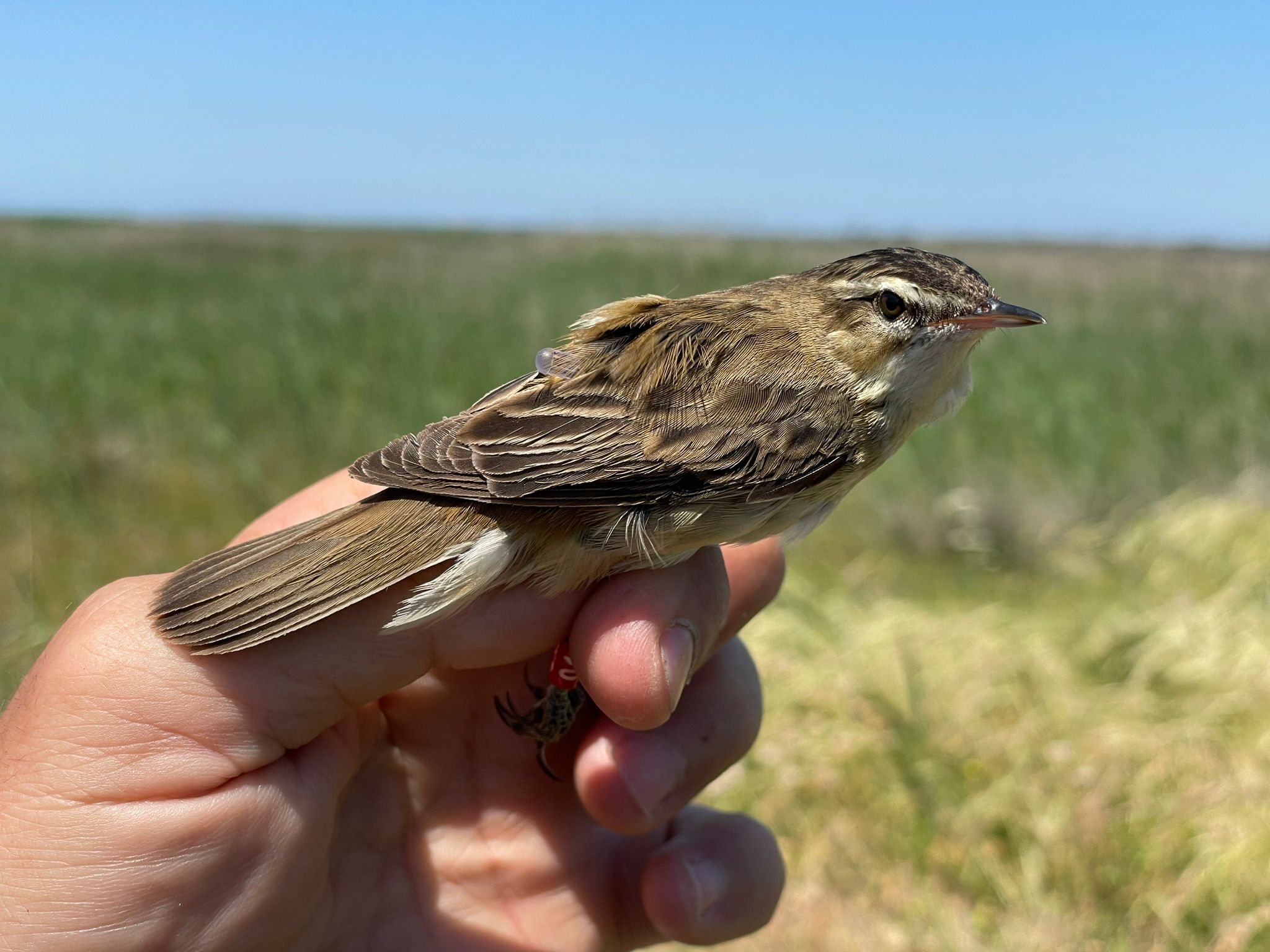
We hope to see you next year!
This reed warbler, weighing around 14g, was captured near its nest in the reedbed at Trunvel, Finistère. It was fitted with a 0.5g GLS which records its approximate geographical position twice a day for one year. In order to retrieve the recorded data, we’ll need to find this warbler next year, in the hope that after its migration, it will come to breed on the same site, as is often the case.
